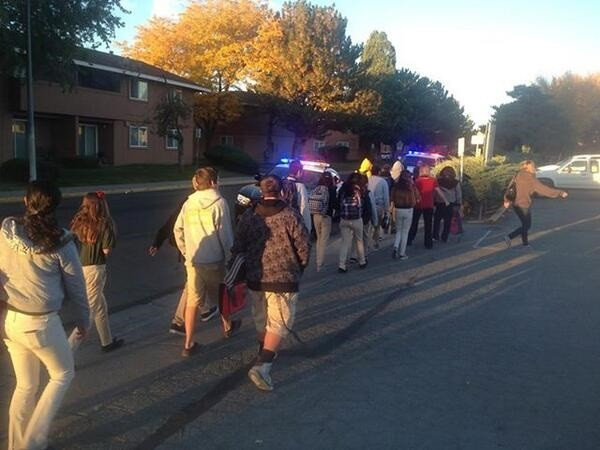A crisis in masculinity among young boys is driving them to carry out school shootings, study finds
These boys often struggled to live up to perceived masculine ideals, developing strong grudges against their peers and teachers.

Boys who carry out school shootings in the US often struggle to live up to perceived ideals surrounding masculinity, a new study has found.
Kathryn Farr, from Portland State University, describes how these boys develop strong grudges against their peers and teachers after becoming isolated or shunned socially. This causes the shooters to become increasingly angry, depressed and more violent until, ultimately, they lash out.
The study, published in the journal Gender Issues, examined the shared characteristics of 31 school boys involved in 29 mass shootings in American schools between 1995 and 2015.
Farr suggests that being accepted as "appropriately masculine" by peers is what defines the social status of boys in middle and high school. This ideal of masculinity involves the idea that men should be cool, heterosexual and tough, that they should shy away from "sissy stuff", and embrace activities, behaviours and mannerisms that are typical of "guys".
For those boys who fall short of these ideals, psychological problems can arise which can exacerbate existing issues.
Ten of the 31 young men, who were aged 18 or under, had a history of serious psychiatric problems, while another ten had grown up in abusive households. The remaining eleven tended to react explosively and inappropriately to incidents that they felt unjustly discredited them. The majority of the boys studied where white and all except one identified themselves as being heterosexual.
"Many of the adolescent shooters had personal troubles that affected their ability to manage their social performances at school," said Farr. "Moreover, the potential rampage of a boy with severe mental illness and rampage-related risk factors could be especially injurious."
Farr found that most of the boys had faced repeated and public name-calling which often involved feminized or homosexual descriptions, such as being a "homo", a "cry baby" or a "fag". All 31 shooters were made aware of their failings by the emasculating bullying of their peers, rejection by girlfriends or marginalization in general. Some even reported being physically and sexually victimized by their male peers.
Many felt the treatment they received was undeserved and denied them their entitled masculinity. In response, most of the boys regularly put on dramatic displays of bravado in an attempt to show that they were indeed tough and powerful. This included, bringing guns to school, or emphasising violent themes in their writings, drawings or class presentations. Furthermore, almost all had bragged about their shooting plans prior to carrying them out.
Farr suggests that American schools should teach their students about such incidents and what warning signs to look out for in others. In addition, she believes school referral services should be provided and teachers should address masculinity issues in classroom discussions.
"How often are adolescent boys given the opportunity to talk with one another about masculinity norms and their challenges, including norms embracing violence or the effects of emasculating bullying? Such classroom-based discussions could also help schools identify, provide and give value to activities that appeal to boys whose interests and skills lie outside the norms of insider masculinity," Farr said.
Finally, she stressed, that troubled adolescents should not all be unnecessarily stigmatized: "Although many boys display at-risk behaviours and attitudes, very few will actually become school shooters."





















